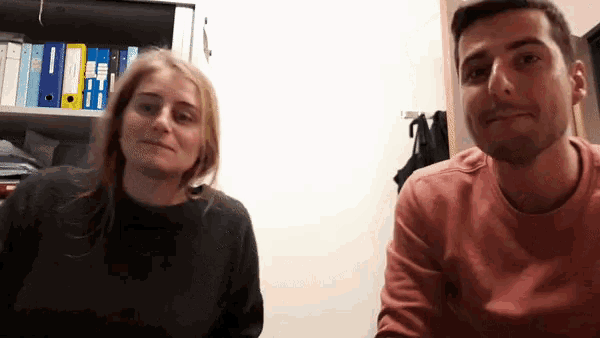They are not Planned Parenthood.
That's Planned Infanticides for the Sale of Baby Body Parts.....
That's Planned Infanticides for the Sale of Baby Body Parts.....
I'm so glad my tax dollars went to paid advertising for the Dim party. What a great way to maximize funds.Well, not a word about how great the ratings have been on the continued Jan 6 hearings. I mean with this being SOOOOOOOO Important to the American People, I am sure they are crushing it, setting records for viewing daily.
Seriously? Is that shit still ongoing? Who knew? 😂Well, not a word about how great the ratings have been on the continued Jan 6 hearings. I mean with this being SOOOOOOOO Important to the American People, I am sure they are crushing it, setting records for viewing daily.
Seriously? Is that shit still ongoing? Who knew? 😂
Well. The first day had 20 million viewers across 12 networks. Or, about 1.66 million per station. For perspective, the womens softball national championship had 2.1 million viewers. 😂😂Well, not a word about how great the ratings have been on the continued Jan 6 hearings. I mean with this being SOOOOOOOO Important to the American People, I am sure they are crushing it, setting records for viewing daily.
Nah, these three are much smarter than the entire committee.
Not sure if that Nadler on the right crapping his pants? 😂Nah, these three are much smarter than the entire committee.
More like Selter (I know he’s not on the committee) getting his pink slip verbalized to him.Not sure if that Nadler on the right crapping his pants? 😂
I thought memes were suppose to make fun of something. This one seems pretty spot on.
Way too intelligent to be compared to that lame committee 😅.
To be fair, Brandon has plenty of "Mo's" in his administration. Short for, well, you know. 😂Way too intelligent to be compared to that lame committee 😅.
The only comparison is both are staged and acted out for an audience.To be fair, Brandon has plenty of "Mo's" in his administration. Short for, well, you know. 😂
BOOOOMER!!!Well. The first day had 20 million viewers across 12 networks. Or, about 1.66 million per station. For perspective, the womens softball national championship had 2.1 million viewers. 😂😂
Yeah, Trump was having sex with Schiff's wife when that mattress label was torn.

Putting this here as this is the real Jan 6th OG thread. 😉
Hey little dickey….got your fake hearing committee has some explaining to do do. They got caught this week, and it is hilarious. This was their bombshell witness, which means exactly what we have all been saying. You got duped….again. This is Russia Russia Russia on roids. MAGA!!!’
@RayGravesGhost





Little Dickey has the rug pulled from him again. From Kap is an all star to "the walls are closing in". 🤣 🤣 🤣 😂And just like that…..Mark Meadows says his aid is lying about Pardon request. LOL.
Has a hearing ever gone sideways as fast as this one?
@RayGravesGhost
The media and committee is looking at you like….



Poppy Joe got <65M votes. I’ll bet history proves that correct.Trump upped his vote total from 63 million in 2016 to 74 million in 2020, an incumbent record. Somebody likes Trump. I recommend the documentary movie 2000 Mules. There are not 81 million Americans stupid enough to vote for the misery we see before us. Have we looked at Biden approval ratings in blue states?
Mrs “Greens” 😆
If nothing else, all these hearings, fake russia garbage etc, have exposed exactly why Trump 2024! Why, because this corruption and games in Washington, with the media, and big tech has to be stopped. The only way that happens? Elect the Guy that all those organizations don’t want you to elect the most.The point/hope of these 'hearings' was that they could provide enough 'explosive' testimony to roll up into some charges against our President Trump, and disqualify him from running in 2024.
Instead, we've gone in 24 hrs from the dems having a 'star witness' who was gonna sink Trump, to ABC, CNN and NBC all agreeing that SHE WAS LYING. @Uniformed_ReRe still thinks she seems credible tho LOL
The walls are definitely closing in on Trump. cc @Illegal-shift
I thought your boy got the ban hammer.

https://stories.usatodaynetwork.com/workforced/
A century later, unpaid prison labor continues to power Florida
In the spring of 1923, nearly a hundred witnesses testified to the horrific conditions at the state’s convict labor camps before a joint committee of the Florida Legislature.
Some 57 years after slavery had been abolished, a loophole in the 13th Amendment allowed the state to profit off forcing prisoners, most of them black, to work. The men lived in filth and had little to eat. They were arrested on frivolous or petty charges and made to pay off their debts working long hours in the sun. Those who didn’t faced whippings, beatings and torture. Guards could be brutal and needlessly vindictive.
The hearings spanned several days, generating headlines in newspapers across the country. Under the pressure, state lawmakers abolished convict leasing — or the sale of prisoners to private companies. Soon after that, they outlawed the strap as a form of punishment.
Yet, forced labor not only persisted, it remained integral to the Florida prison system. Whippings were replaced with solitary confinement. Convict leasing morphed into prison farms and chain gangs, and the state took custody of the inmates.
Eventually, chain gangs faded from memory, despite a brief revival in the mid-1990s. But to this day, state prisoners are forced to do much of the same work. In fact, they’ve only taken on more responsibilities. And while the whippings and beatings have largely ceased, reports of inhumane conditions at the convict labor camps linger.
In a given year, some 3,500 unpaid prisoners make up Florida’s shadow economy. State road crews and “community work squads” incarcerated by the Department of Corrections subsidize local governments from the Panhandle to Miami-Dade: powering waste and public works departments, grooming cemeteries and school grounds, maintaining and constructing buildings, treating sewage and collecting trash.
Earlier this year, nearly a century after the convict labor hearings of 1923, a different group of people testified, this time before the Alachua County Commission.
They described prisoners forced to work long hours in the Florida summer heat, running weed-eaters and busting up sidewalks. Rest breaks and food were hard to come by. Rules were bent or outright abused. Corrections officers could be cruel. Health and safety concerns were ignored.
Like the chain gangs of a century ago, the men on community work squads remain unpaid. Their only alternative to working: confinement. Work squads are made up of inmates nearing release, but they receive no vocational certificates, and have nothing to show for their work when they get out.
Cote Cunningham was based out of Lancaster Work Camp in Trenton. He said he was forced to mow, paint, weed and pick up trash on an outside grounds crew. Cunningham said prisoners in the camp endured coercion and poor conditions until they were “ground down to nothing,” then released with no work skills applicable in the outside world.
“You’re thrown back into society and you’re supposed to make it and be successful,” Cunningham told the Times-Union, “But you don’t get nothing from being in there at all.”
In a given year, some 3,500 unpaid prisoners make up Florida’s shadow economy. State road crews and “community work squads” incarcerated by the Department of Corrections subsidize local governments from the Panhandle to Miami-Dade.
In Alachua, the commission voted in December to end the county’s labor agreement with the Florida Department of Corrections after two hearings. It was a trailblazing decision that echoed history: Alachua was one of the first counties to end its convict leasing system after the 1923 hearings.
The conditions in Florida prisons — violent and understaffed — drew the commissioners’ skepticism. So did the secrecy of the Department of Corrections, which refused to allow Gainesville Public Defender Stacy Scott to interview inmates about their work conditions at the city’s state work camp.
“The biggest hit on this program is that we are in some way complicit in an unjust system,” Commissioner Hutch Hutchinson said at the hearing.
Florida is one of only a handful of states that use unpaid inmate labor. All of them are Southern and have disproportionately black prison populations.
It is nearly impossible to calculate the value of prison labor across Florida. Hundreds of state and municipal agencies — as well as dozens of state colleges and nonprofits — tap into the forced labor pool.
Some 2,500 prisoners are assigned to community work squads, and another 1,000 to Florida Department of Transportation road squads. Prisoners worked about 17.7 million hours in the last five fiscal years on the community work squads alone. The
Department of Corrections estimates the value of this labor at around $147.5 million over the time period, but the real value is likely double or triple that estimate — factoring in actual wages and benefits. The FDOT said it has used about $67 million of inmate labor since July 2015.
The Times-Union reviewed department policies, analyzed reams of public records and interviewed 11 former inmates to gain a better understanding of the state’s hidden workforce. What emerged was a troubling portrait reminiscent of a century-old practice.
• Prisoners are forced to work. In at least some instances, that includes those who have medical issues. Those who don’t go out with their squads receive a disciplinary report, which can lead to up to 60 days in confinement and the loss of time earned off their sentences. Florida corrections officers write an average of 1,750 disciplinary reports per year for “refusing to work.” It’s not readily apparent how many of those were for people on the work squads.
• Eleven prisoners from work camps — nine of them who had been on squads that went outside the gate — said they did not get enough food to sustain them through a full shift of hard labor. They complained of excessive heat in the summer and all but one said they were often made to spread the filth of their uniforms onto their beds before showering, posing health risks.
• Community and Department of Transportation work squads are unpaid, and whatever money prisoners have on their own is subject to fines and fees associated with the private vendors running their bank accounts. Work squads assignments don’t lead to vocational degrees or certificates to help prepare former prisoners to re-enter society.
• Prison laborers don’t have the same protections as free workers, and labor practices on some assignments have raised safety and environmental health concerns with inmates. Community and Department of Transportation work squads make up 3.5 percent of the prison population, but account for 20 percent of reported injuries on average since 2016. Those injuries are likely underreported due to prisoners’ fears of retaliation.
• The conditions at the camps allow for what the Department of Corrections terms “costs savings” or “value added” agreements with local governments, offsetting the cost of running cities and counties across the state by providing scores of unpaid men for municipal departments.
• Racial disparities seen throughout the state prison system are mirrored on work squads. Forty-five percent of men in Florida prisons — and 43 percent on work squads — are black, according to the most recent DOC data. Black men make up less than 10 percent of the state population.
The Department of Corrections defended its program.
Secretary Mark Inch told the Times-Union that “work programs are a valuable piece of Florida’s correctional system and are an integral part of an inmate’s rehabilitation and restitution.”
“In accordance with Florida law, the Florida Department of Corrections work programs allow inmates opportunities to provide restitution to communities throughout Florida,” Inch, who did not agree to an interview, said in a statement. “Similar to community service or volunteer work, inmates who are assigned to work squads provide a valuable service to Florida’s communities, reduce expenditures to taxpayers, and receive job skills and experience that will benefit their lives after they are released.”
Former squad members interviewed by the Times-Union didn’t agree. Neither did Alachua County officials.
Alachua County Commissioner Ken Cornell highlighted the state’s recidivism rate, or the frequency at which prisoners cycle back into the system — 33 percent at three years, but doubling to about 65 percent at five, according to the James Madison Institute.
“When they fix the problem, let them come back and sell us on the benefit of using free labor,” he said at a January hearing. “It should include lower recidivism and better job training. I’m not going to hold my breath.”
Other county and municipal departments are reliant on prison labor and incorporate the savings into their budgets. The majority of them are rural and strapped for tax revenue.
“There’s no way we can take care of our facilities, our roads, our ditches, if we didn't have inmate labor,” said Warren Yeager, a former Gulf County commissioner. “We could not tax our citizens enough to replace the value that the inmate labor contributes to our community.”
The city of Jacksonville has no agreement with the Department of Corrections, but Duval County sends more people to prison than any other county in the state, so residents are often assigned to work squads. The most recent Duval County entity to use prison labor was the city of Baldwin in 2017.

There would be two kinds of prison in my world.
1. One for the non-violent rule/law breakers.
2. And one for the violent thugs that have no place in a civilized society.
Those in #1 would be rehabbed with education and given job training.
If they didn't show reasonable progress, then off to #2 they would go.
Those in #2 would be worked and left to serve out their entire sentence.
Instead of a weight room, I would have them all busting big rocks into marketable gravel.
The privileged better guys among them would be allowed to work on the farm/ranch, to grow and raise at least some of what they eat.
Those that refused to work would soon starve and end up being fertilizer for the farm...
I would like to think that is true but I'm afraid we are not that smart.Another lie proven. What is that something like 4 or 5 now. I am starting to think this Cassidy Smollett was actually a plant by the Repubs. They told her, be reluctant at first but hint you know something, then slowly act like they are breaking you, then go full steam ahead and tell them all the lies they want to hear.